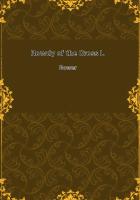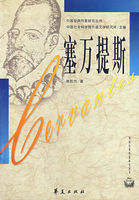The balloon, which had gradually been dropping out of favour, had now been virtually laid aside, and, to all appearance, might have continued so, when, as if by chance concurrence of events, there arrived both the hour and the man to restore it to the world, and to invest it with a new practicability and importance. The coronation of George the Fourth was at hand, and this became a befitting occasion for the rare genius mentioned at the end of the last chapter, and now in his thirty-sixth year, to put in practice a new method of balloon management and inflation, the entire credit of which must be accorded to him alone.
From its very introduction and inception the gas balloon, an expensive and fragile structure in itself, had proved at all times exceedingly costly in actual use. Indeed, we find that at the date at which we have now arrived the estimate for filling a balloon of 70,000 cubic feet--no extraordinary capacity--with hydrogen gas was about L250. When, then, to this great outlay was added the difficulty and delay of producing a sufficient supply by what was at best a clumsy process, as also the positive failure and consequent disappointment which not infrequently ensued, it is easy to understand how through many years balloon ascents, no longer a novelty, had begun to be regarded with distrust, and the profession of a balloonist was doomed to become unremunerative.
A simpler and cheaper mode of inflation was not only a desideratum, but an absolute necessity. The full truth of this may be gathered from the fact that we find there were not seldom instances where two or three days of continuous and anxious labour were expended in generating and passing hydrogen into a balloon, through the fabric of which the subtle gas would escape almost as fast as it was produced.
It was at this juncture, then, that Charles Green conceived the happy idea of substituting for hydrogen gas the ordinary household gas, which at this time was to be found ready to hand and in sufficient quantity in all towns of any consequence; and by the day of the coronation all was in readiness for a public exhibition of this method of inflation, which was carried out with complete success, though not altogether without unrehearsed and amusing incident, as must be told.
The day, July 18, was one of summer heat, and Green at the conclusion of his preparations, fatigued with anxious labour and oppressed by the crowding of the populace, took refuge within the car of his balloon, which was by that time already inflated, and only awaiting the gun signal that was to announce the moment for its departure. To allow of his gaining the refreshment of somewhat purer air he begged his friends who were holding the car of his balloon in restraint to keep it suspended at a few feet from the earth, while he rested himself within, and, this being done, it would appear that he fell into a doze, from which he did not awake till he found that the balloon, which had slipped from his friends' hold, was already high above the crowd and requiring his prompt attention. This was, however, by no means an untoward accident, and Green's triumph was complete. By this one venture alone the success of the new method was entirely assured. The cost of the inflation had been reduced ten-fold, the labour and uncertainty a hundred-fold, and, over and above all, the confidence of the public was restored. It is little wonder, then, that in the years that now follow we find the balloon returning to all the favour it had enjoyed in its palmiest days. But Green proved himself something more than a practical balloonist of the first rank. He brought to the aid of his profession ideas which were matured by due thought and scientifically sound. It is true he still clung for a while to the antiquated notion that mechanical means could, with advantage, be used to cause a balloon to ascend or descend, or to alter its direction in a tranquil atmosphere. But he saw clearly that the true method of navigating a balloon should be by a study of upper currents, and this he was able to put to practical proof on a memorable occasion, and in a striking manner, as we shall presently relate.
He learned the lesson early in his career while acquiring facts and experience, unassisted, in a number of solitary voyages made from different parts of the country. Among these he is careful to record an occasion when, making a day-light ascent from Boston, Lincolnshire, he maintained a lofty course, which promised to take him direct to Grantham; but, presently descending to a lower level, and his balloon diverging at an angle of some 45 degrees, he now headed for Newark. This experience he stored away.
A month later we find him making a night voyage from Vauxhall Gardens, destined to be the scene of many memorable ascents in the near future; and on this occasion he gave proof of his capability as a close and intelligent observer. It was a July night, near 11 p.m., moonless and cloudy, yet the earth was visible, and under these circumstances his simple narrative becomes of scientific value. He accurately distinguished the reflective properties of the face of the diversified country he traversed. Over Battersea and Wandsworth--this was in 1826--there were white sheets spread over the land, which proved to be corn crops ready for the sickle. Where crops were not the ground was darker, with, here and there, objects absolutely black--in other words, trees and houses. Then he mentions the river in a memorandum, which reads strangely to the aeronaut who has made the same night voyage in these latter days. The stream was crossed in places with rows of lamps apparently resting on the water. These were the lighted bridges; but, here and there, were dark planks, and these too were bridges--at Battersea and Putney--but without a light upon them!















